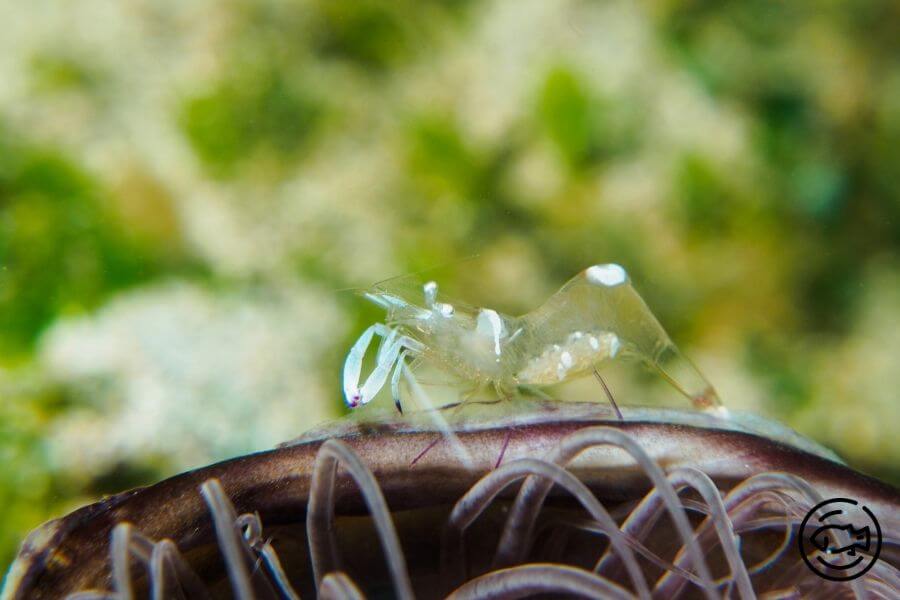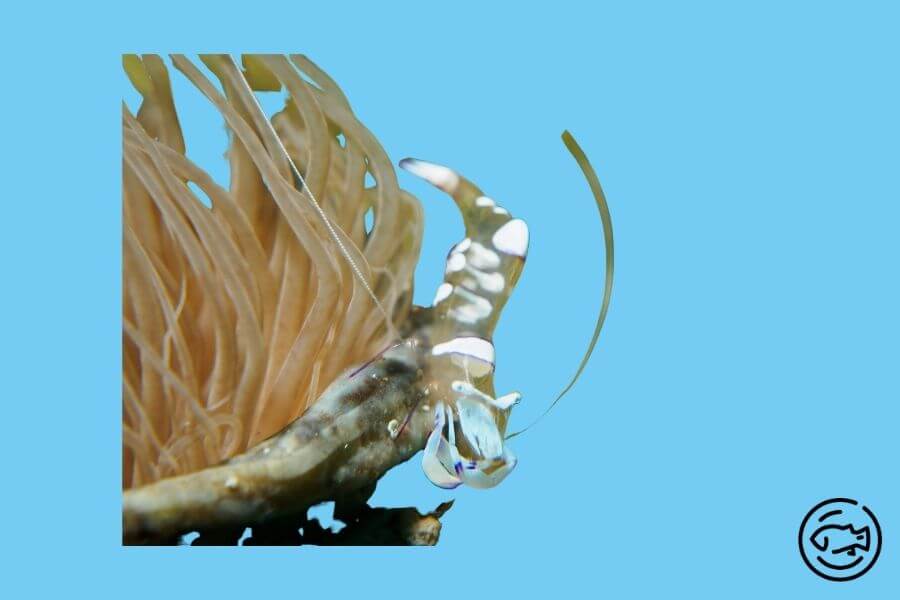Is your ghost shrimp turning white? The reasons can be many, from poor water conditions to bad health to the natural aging process. Thankfully, you can fix it in most cases by setting up the optimal water temperature and pH level, dealing with the issues cropping from copper sulfate, or allowing your little fish to molt peacefully. The solutions, like the causes, are several. Let’s know more about it.
Ghost shrimps are extremely popular among fish tank owners for their spectacular translucent bodies. But even though some species of aquatic life do not call for comprehensive care and maintenance, it’s altogether a new ball game with shrimps.
The minutest alteration in the water environment can cause stress and lead to numerous unwanted diseases in shrimps. If you have noticed lately that the ghost shrimp turning white, the most common reason is old age.
This might dishearten you as you realize that your aquatic pets are on the verge of their natural life. Well, there are other reasons for this, and some of them can be easily alleviated.
Causes Behind Your Ghost Shrimp Turning White

Each cause has its own set of characteristics and may induce the shrimp for acting in different ways depending on their individual health conditions. Some of the common causes and cures are given below:
Molting:
The first cause is perhaps the most common, and thankfully, it’s the safest. It is a natural process, and ghost shrimps turn white when they are molting, i.e., they are growing, and their shell is getting renewed.
This procedure is also essential for purifying their bodies and shell out toxins along with other harmful elements.
If you can’t spot your ghost shrimp anywhere in the water, don’t jump to the conclusion that your fish has passed away. As they start molting, they tend to hide for some time as they remain incredibly vulnerable to predators and other possible dangers during this phase.
As you see that your fish is preparing itself to molt, you must check the water conditions to ensure that it won’t cause any stress.
When you see that your ghost shrimp is gradually becoming opaque and developing a whitish tinge while searching for hiding places among various structures and plants, then there is a high chance that your fish is simply molting. What you can do here is to search for the exoskeleton of your shrimp.
It will either float in the water or lay on the bottom. You should remove it from the aquarium or be food for other shrimps and fish. When you see such shells floating about in the aquarium, you can be sure that your ghost shrimp has not died but is hiding in a safe place.
Shrimps need to go through their regular molting cycle for survival. But at times, there can be an underlying issue that prevents this natural process.
This may happen if the carbonate hardness or the total hardness is much above or below the prescribed level. You should, thus, change the water from time to time to ensure that your little friend doesn’t suffer from any health problems while molting.
Putting this in other words, the condition will be improved within a day or two. But if that time mark is passed without any improvement of their situation, then you should think of other reasons.
Sickness:
Your ghost shrimp turning white can also be attributed to reasons other than molting. When there are symptoms like jittering and shaking, it may mean some infection. In such cases, you must isolate your affected fish to prevent the infection from spreading.
Other symptoms that you should be watchful of are lethargy, drawn bellies, and cloudy eyes. Muscular necrosis is widespread among ghost shrimps and causes a whitish tinge in the abdomen or tail.
This disease is highly contagious, and you must quarantine it without waiting. There is no proper treatment for this condition, but you can resolve the problem by changing at least ten percent of the water daily.
It would be great if you were swift to act and treat the shrimp properly as it can be fatal to be white for long. Some of the most common health problems associated with this are swim bladder and tuberculosis. This may even contract fungal and bacterial infections at the same time.
This infection may stem from inherent sickness or organ failure. But it can also happen because of bad water quality.
If you think that the latter is the main problem behind the whiteness of your shrimp, then you should address the issue without further delay as it may hamper the health of other tank-mates.
Dreadful water condition:
Partial water changes are essential for all aquariums regardless of the species in them. And when you have a ghost shrimp, water changes become all the more necessary.
It would be healthy if you were very particular about the pH balance and the level of copper sulfate. These two issues are the primary culprits behind ghost shrimps turning white.
Like all other species of shrimps, ghost shrimps also have high copper sensitivity. This is due to their organs absorbing copper for turning it into oxygen.
But it is an involuntary mechanism which means that they do not have any control over it. This implies that your shrimp will keep on absorbing all the copper present in the water.
As this happens, ghost shrimps can no longer process oxygen and suffer from copper toxicity. Even a little extra level of copper can kill them when you don’t pay heed to their body becoming white.
If you have a shoal of shrimps and notice that most of them exhibit whiteness, the water quality is at the top among the suspects.
In the same way, pH changes can also be destructive for ghost shrimps. When there is excess carbon dioxide in water, the pH level will shift and cause the fish to move upside down. It is thus essential to check the pH level of the water tank regularly.
Incorrect water parameters:
When the water parameters are not suitable, it can also cause lead to bad water quality and, naturally, make your ghost shrimp suffer. When you are keeping a ghost shrimp in your water tank, you must set it up in the right way to ensure that your pet fishes get the suitable parameters.
The pH level should always be between 7.0 and 8.0, while the temperature must range between 72 and 79 degrees Fahrenheit. Lastly, the hardness level of the water must be somewhere ranging from 10 to 20dGH.
The nitrogen cycle should be checked from time to time so that there is no harmful surge of nitrite or ammonia. It’s best to keep these two elements at 0 ppm for the optimum health of your shrimps.
When there is any change in these conditions, the water quality suffers and causes stress to your ghost shrimps and cause them to become opaque and white.
Natural aging process:
What if you have checked all the above conditions and found that the water quality is top-notch and your shrimp is neither molting? In that case, you will just have to accept that your fish has turned old.
On average, the lifespan of most ghost shrimp is about two years, and as they reach the end of their life cycle, they start losing the translucent sheen and become white. This is especially true if you see that only one among the group of fishes is turning white.
Even though it’s difficult to accept the death of a loved one, you can at least rest assured that your little pet will leave peacefully without any disease or suffering.
Dealing With The Problem Of Ghost Shrimp Turning White
Besides the regular monitoring of the water and checking up on your ghost shrimps, there are certain areas that deserve your attention for the healthy growth and development of your fish.
At times we have you administer products in the water containing copper sulfate in order to remove the excess chloramine and chlorine.
But this can be lethal for your baby ghost shrimps, and you know this just when your fish starts turning white. The first thing to do is to discontinue using such water conditioners.
Another safe cure for the ghost shrimps becoming whitish is to boost the oxygen levels in the water. Shrimps require more oxygen to live compared to other hardy fishes, and if the oxygen level falls below the desired level, it can cause various problems, including whiteness.
Conclusion:
If your ghost shrimp is turning white, there is a high chance that something is bothering it. You should watch the water parameters and ensure that the water temperature is neither too hot nor cold.
Since there is no natural treatment for the whiteness in shrimps, you have to find out the underlying condition to fix it. And for this, you will have to observe your fish closely to find out what’s stressing them and how to do away with it.



